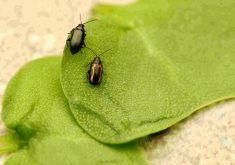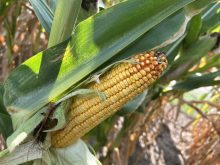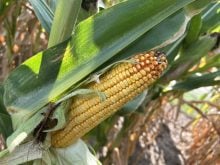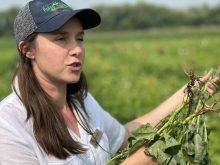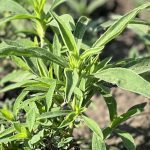A multi-university study says that neonicotinoid insecticide seed treatments have little effect on soybean aphid populations, as the pesticide has disappeared in plant tissue by the time the aphids arrive.
The two-year study was a joint effort of Purdue University, Iowa State University, Kansas State University, North Dakota State University, the University of Minnesota, South Dakota State University and the University of Wisconsin. It examined the effectiveness of neonicotinoids (also known as neonics) on soybean aphid control, compared to an Integrated Pest Management (IPM) approach, over multiple states.
Read Also
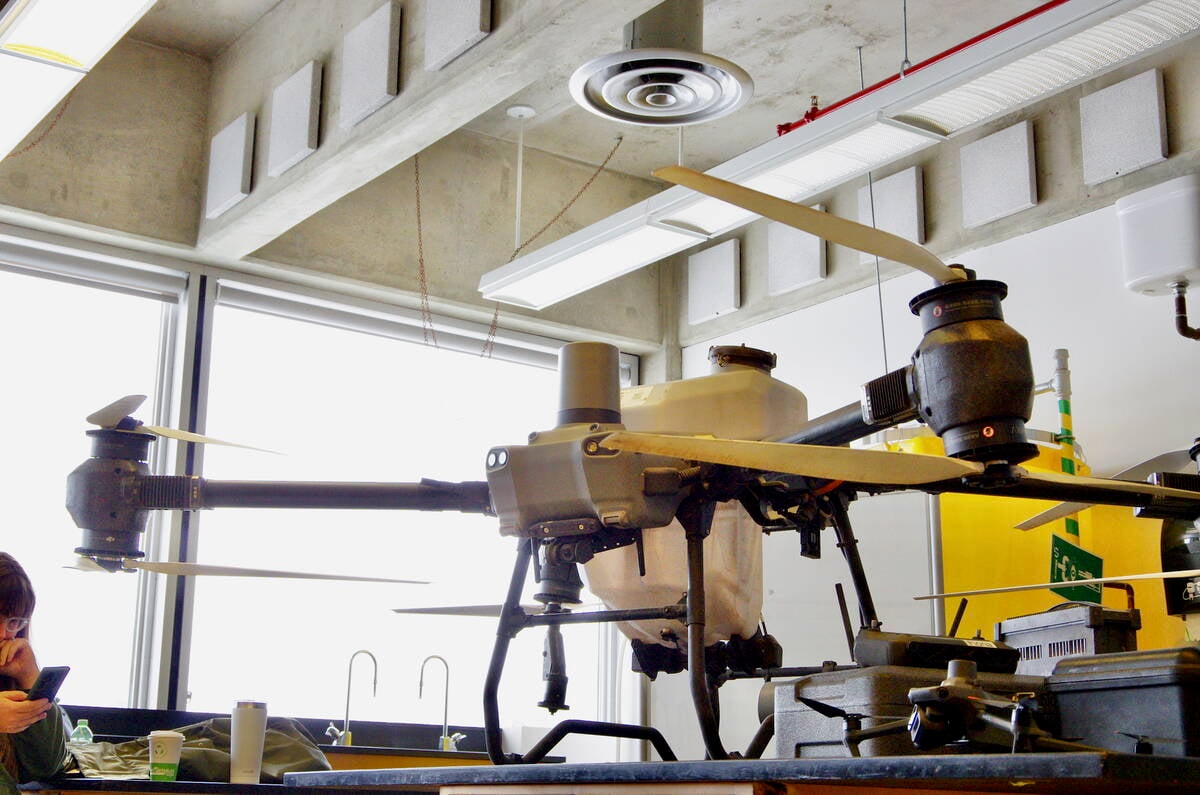
Manitoba trials work toward drone spraying approvals
Canada’s PMRA says pesticides need drone-specific labels before drone spraying can take off; Manitoba crop trials are adding data towards that approvals process.
“We knew most growers were using neonicotinoids and we knew that the biggest soybean pest is aphids,” says Christian Krupke, a professor of entomology at Purdue University and one of the researchers who worked on the study.
The researchers and the North Central Soybean Research Program, which funded the program with checkoff funds, wanted to know if that widespread use of neonics actually had an impact on what is by far the largest economic-impact soybean pest.
The research found that the neonic seed treatments were no longer having any effect by the time soybean aphids reached threshold levels.
The findings are not a surprise to entomologists and agronomists. For example, the Manitoba Pulse and Soybean Growers Soybean Seed Treatment Risk Assessment tool identifies soybean aphids as unlikely to be affected by a seed treatment.

In the United States, there’s concern that farmers believe their neonic seed treatment will get them some aphid control. Syngenta, which makes the thiamethoxam seed treatment product used in the study, claims that it will help control soybean aphids.
“I’ve presented this data to a lot of farmers,” says Krupke. “A lot of them were surprised by how short lived the product is in the plant. When the product is gone, the plant is at V2 (growth stage). There is not a lot of aphid action happening in a plant that small.
“They are paying for two weeks of potential management at best. Farmers thought that there would be more there.”
IPM a better approach
The researchers emphasize that there are still valid reasons for using insecticide treatments for soybeans including fields at high risk for pests such as seed corn maggot and white grubs. Seed-production fields may also make sense.
In Manitoba, wireworms should be the primary reason for using an insecticide seed treatment, says Kristen MacMillan, research agronomist in soybeans and pulses at the University of Manitoba. Aphids are a “sporadic pest. They don’t overwinter in Manitoba,” she says.
Aphid outbreaks happen every two to three years in Manitoba, including most recently in 2011 and 2015. Aphids arrive in Manitoba in mid-July and if they reach a threshold of 250 aphids per plant and rising, it would be economical to spray a foliar insecticide.
“For something like soybean aphids, we rely on scouting in season,” says MacMillan. She estimates that about 70 per cent of Manitoba soybeans have a seed treatment, but that includes fungicide only and fungicide plus insecticide treatments.
The better approach than seed treatments for aphids would be Integrated Pest Management, says Krupke. In this study, that would include a combination of tactics to keep pests below the economically important threshold level. That includes scouting and monitoring and when aphids reach 250 aphids per plant, spraying an insecticide.
The economic analysis also favours IPM, including paying for hired scouting for aphids.
Soybean-growing areas, and that includes Manitoba, have low pest pressure for soybeans, says Krupke, who was raised in Canada and did his undergraduate degree at the University of Guelph.
“They are pretty durable plants. It’s hard to cut into that yield,” he says. Plant breeders have made corn and soybeans much more resistant to all sorts of environmental influences and Krupke says that the threshold levels developed in the 1980s are likely significantly out of date.
A similar study looking at the use of seed treatments in corn is due to be released soon.
The study also raised concerns about the effect of neonics on non-target organisms and beneficial insects that feed on crop pests.





